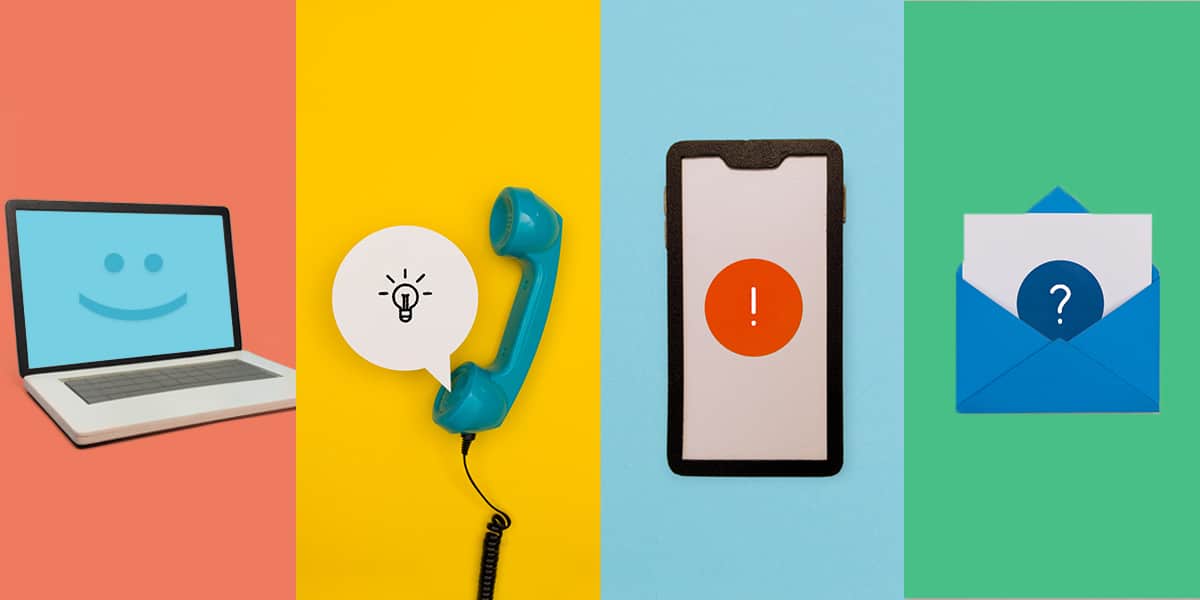What can IT departments learn from B2C organizations?

Paying with your phone, using Apple or Google Pay. Fully automated stores without cashiers. Smart mirrors in stores that let you virtually try on clothing. Groceries delivered to your doorstep in less than 10 minutes.
These are just a few examples of amazing personalized customer experiences in the world of B2C (business-to-consumer) organizations
But why should you care? IT departments have nothing in common with B2C organizations, right? Think again.
Customer is king (and they have increased expectations)
At first sight, your IT department's customer service may seem miles away from an average B2C organization. But they’re more alike than you think.
Think about it: every single one of your customers is also a B2C customer. They’ve all had great B2C customer experiences. It’s no surprise that they have come to expect the same seamless, personalized experience from your services. As customer experience improves in the B2C world, customer expectations of IT services rise as well.
The solution? IT departments have to think more like B2C organizations. Here’s how:
1. Provide omnichannel support
How can your customers contact your IT department? Do they have to email or phone you? Or even walk up to the IT service desk to get help? This will no longer do.
Customers are used to interacting with B2C organizations across several platforms, including the organization’s website, social media, chat, and email. And they expect the same from your IT department.
With omnichannel support, your customers can reach out to your department how and when it’s right for them. Whether they use WhatsApp, Skype, Microsoft Teams or prefer email or chat, all of their problems and questions can be handled in one place, creating a seamless omnichannel customer experience just like the B2C ones they’re used to.
2. Start customer journey mapping
“Know thy customer” is the number one rule of B2C marketing. And for good reason. But researching your customers shouldn’t be limited to B2C organizations alone.
When you develop a deep understanding of your customers, you can create a customer experience that’s tailored to their specific wants, needs, and problems. The more relevant you make your services, the more your customers will use and appreciate them.
But how do you get to know your customer?
Start customer journey mapping.
Customer journey mapping lets you step into your customers’ shoes and see what they experience when they request a service from your department. How easy is it to request a new laptop, for example? What are your customers’ interactions with your department like? When they pick up their laptop, is everything set up and ready to go? And how easily can customers reach your department when they have questions?
Customer journey mapping answers these questions and gives you insight into the biggest improvements and easiest quick wins when it comes to customer experience. As customer experience improves in the B2C world, customer expectations of IT services rise as well.
3. Invest in self-service
Your customers are busier than ever. And B2C organizations know this: that’s why they design customer experiences that enable their customers to make decisions on their own schedule. (Think, for example, of customers being able to choose their own time slot for a delivery.)
Your IT department can do the same with self-service. A self-service portal within ITSM software gives your customers the power to find their own answers in their own time – whether that’s during or outside office hours.
This makes life a lot easier for your customers. In fact, 67% of consumers say they prefer self-service over speaking to a company representative.
Start by making the answers to frequently asked questions such as “How do I log onto the company WiFi?”, “How do I set an automatic out-of-office reply?” and “How do I connect my laptop to a printer?” readily available for your customers.
Make your IT department truly customer-focused
Want to learn more about improving your customer experience? We wrote the book on it! Check out our customer-centricity e-book for invaluable tips and tricks that make your services stand out.
Inspire others, share this blog



